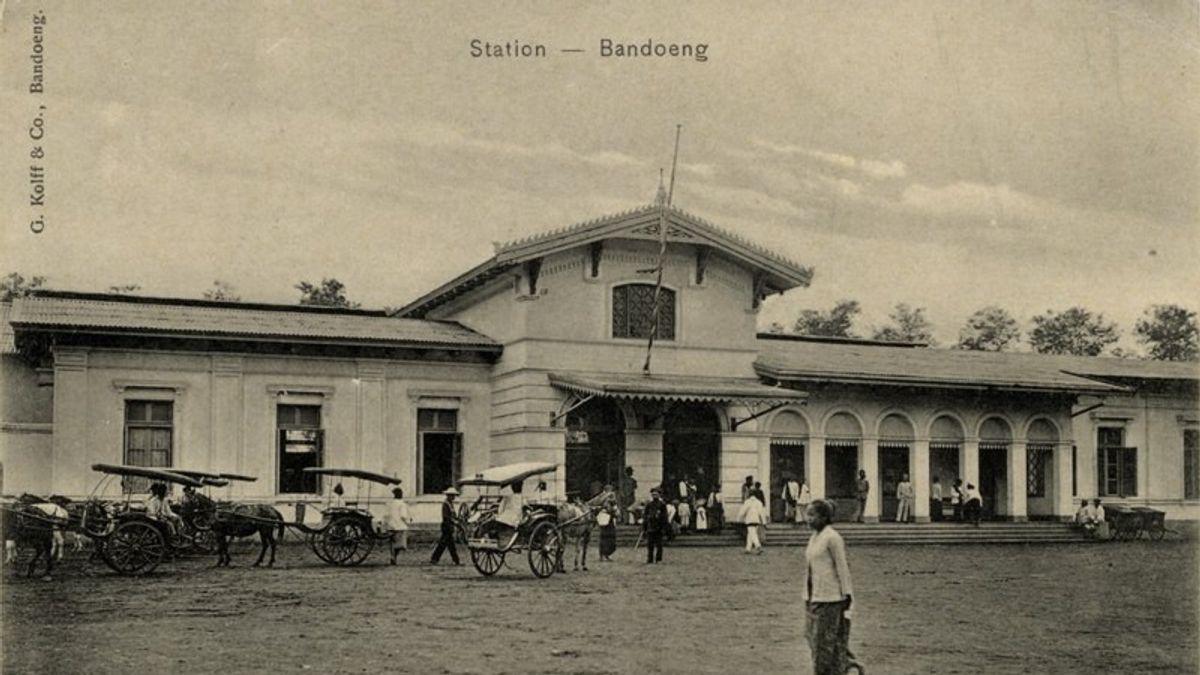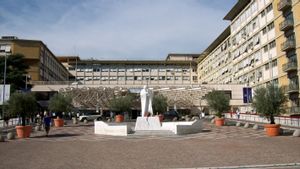JAKARTA - History today, 138 years ago, May 17, 1884, Bandung Station or popularly known as Station Hall was inaugurated. His presence was eagerly awaited by the Dutch East Indies colonial government. The owner of the power seems to be impatiently waiting for the coffers of income from the presence of Bandung Station. The Netherlands hopes that the transportation of export commodities will run smoothly. Likewise the process of human mobility. Therefore, the presence of mass transportation is considered a symbol of the progress of the times.
The popularity of Bumi Priangan (Bandung) as a fertile land is second to none. All kinds of commodity crops – especially coffee – which are planted will definitely lead to one thing: profit. In fact, it has happened since the Dutch era. From the days of the Dutch trading airline, the VOC to the Dutch East Indies colonial government.
Priangan's potential cannot be denied in the map of a big city that generates huge income coffers for the Dutch. However, the Dutch were reluctant to be complacent. The only thing they want is to make a profit many times over. While the welfare of the bumiputras who incidentally as hosts was ignored. Not just once, but many times.
The Dutch also tried to make a breakthrough. The construction of the railway became his teaching. The idea of building a new railway line was carried out in 1864. This step gave the Dutch great hope. Their dream of increasing profits is one step away from becoming a reality.

The Dutch did not forget to make Priangan a place that must be passed by trains. Moreover, from the first the profits generated from planting export commodities in Priangan have always been promising. The construction of the Batavia-Bandung line was then hastened in the 1880s.
“The construction of the railway line was originally intended to transport goods and then it was also used to transport passengers. The situation of train passengers from European passengers is not fixed, while indigenous passengers are always increasing.”
“There are more indigenous passengers compared to European passengers. Trains are used by farmers to go to work which was previously taken on foot. Indigenous passengers usually cover a distance of no more than 10 km or just two station stops,” said Prita Ayu Kusumawardhani in the book Trains in Surabaya 1910-1930 (2017).
The construction of the Batavia-Bandung route was carried out on a massive scale. In order to support rail mobility, the owner of a railway concession in the Dutch East Indies, Staatsspoorwegen (SS) also built Bandung Station in 1884. The station which later became the largest station in Bandung, as well as West Java.

Shortly after, Bandung Station was inaugurated by the Dutch colonial government on May 17, 1884. The inauguration became a new sign of the existence of the Dutch in the land of Priangan. Even as evidence that the symbol of the progress of the times has entered the gates of the city of Bandung.
“The Batavia-Bandung railway line belonging to Staatsspoor en Tramweggen (now PT Kereta Api Indonesia) was inaugurated on May 17, 1884. The Train Station at Spoorstraat West (now Jl. Setasiun Barat) was built in 1884 with a mixed colonial and Chinese architectural style. ”
“In 1920 the shape of the station building was remodeled and enlarged with a colonial architectural style. Ir. J W. Ijzerman with Art Deco architectural style,” concluded Sudarsono Katam in the book Bandung: Kilas Events in the Eyes of Philatelis (2006).
The inauguration of Bandung Station on May 17, 1884 is an important historical record today, regarding railways in Indonesia.
The English, Chinese, Japanese, Arabic, and French versions are automatically generated by the AI. So there may still be inaccuracies in translating, please always see Indonesian as our main language. (system supported by DigitalSiber.id)









